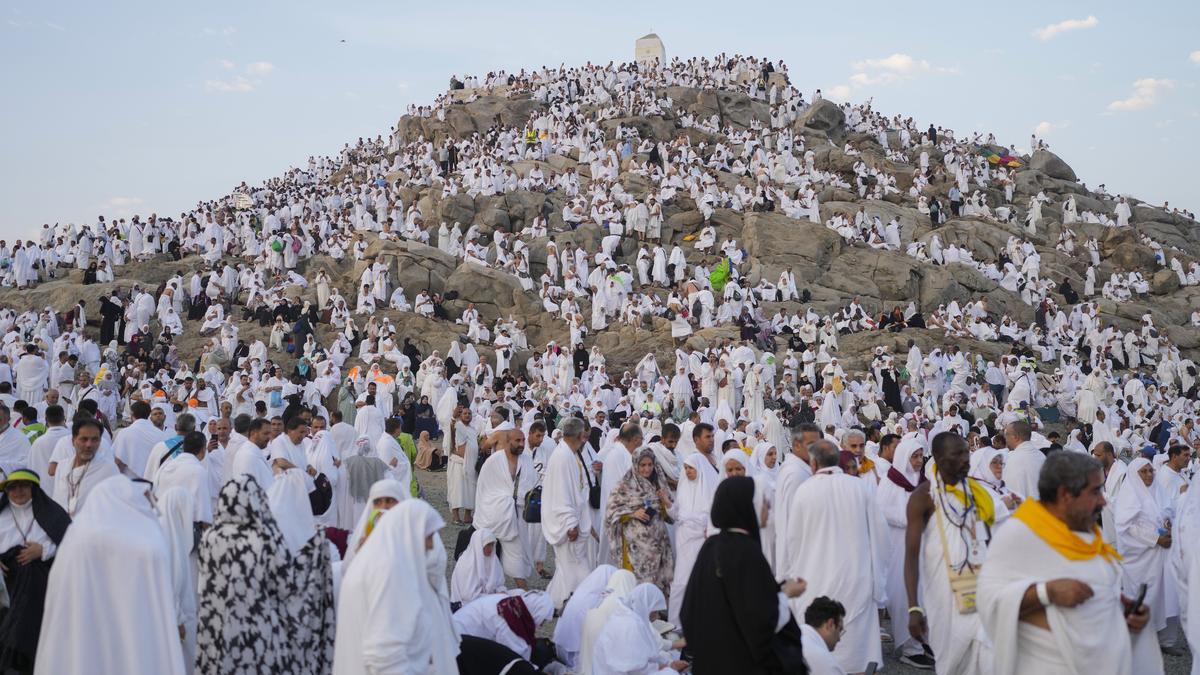The story so far: Hajj, a gathering of nearly two million Muslim pilgrims, which falls in the last month of the Islamic calendar, has been in news again. More than 1,300 casualties were reported due to extreme heat in Saudi Arabia at this time of the year. Most casualties were reported from Arafat, where the pilgrims pause on their way to Muzdalfa. Arafat is the place where the Prophet Muhammad delivered his farewell sermon to 1,44,000 pilgrims in 632 A.D. This vigil at Arafat is an essential part of the pilgrimage without which the Hajj is considered invalid. Many casualties took place as the pilgrims moved from Arafat to Mina in the scorching heat.
What is Hajj?
Hajj is one of the five pillars of Islam. This pilgrimage to Mecca is an essential part of the faith and any person who is economically and physically sound has to undertake the trip once in their lifetime. Prophet Muhammad is said to have undertaken this pilgrimage shortly before breathing his last in 632 AD. The Hajj journey follows the lunar calendar. Accordingly, it falls about 11 days earlier every year. This year’s pilgrimage started at the conclusion of the second week of June. For the upcoming couple of years, the pilgrimage will be undertaken in harsh weather with temperature exceeding 50 degrees Celsius.

What happened this year?
The Saudi authorities reserve a fixed quota for all major countries, depending on the Muslim population, for issue of Hajj visas. It helps to plan the stay and movement of pilgrims in the desert state. The authorities issued Hajj visas to a little more than 18 lakh people but the Hajj was undertaken by over two million pilgrims. This means that around 2 lakh people were unauthorised entrants.
The Saudi authorities insisted that most pilgrims with valid Hajj visas were able to complete the Hajj rituals with the best possible facilities, and there were few deaths beyond natural causes of old age or illness. According to Saudi Health Minister Fahad bin Abdurrahman Al-Jalajel, some 83% of the 1,301 fatalities were unauthorised pilgrims who undertook the journey without requisite precautions at this time of extreme summer temperatures.

Who are ‘unauthorised’ pilgrims?
The unauthorised, non-documented pilgrims often come over from neighbouring countries of Jordan, Egypt and Iraq on a visit visa a little before the Hajj season begins. Some are also blue-collar workers from India and Pakistan who while having a valid work visa, are not entitled to undertake the pilgrimage without proper permission and documentation. The non-documented visitors are usually economically too weak to bear the cost of the pilgrimage through the official route which takes at least 3,000 dollars. Hence, they often take recourse to agents who offer them the journey for half the cost. The agents take the money in advance and often disappear after these men and women land in Saudi Arabia, leaving them in the lurch. The visit visa holders are not allowed entry into Mecca at the time of Hajj. So, these visitors/pilgrims often undertake arduous routes through the desert to circumvent officials.
Also read: Climate change has made the haj pilgrimage more risky
While those who take the approved route are provided with all possible facilities by the host country, including transportation on air-conditioned vehicles with a constant supply of water and medical facilities, illegal entrants are left under the blazing sun with temperatures often crossing 50 degrees Celsius. Many walk on their own from Arafat to Mina, a distance of around 15 kilometres. Unlike others, they have no healthcare facilities to fall back on. Also, most pilgrims in this category are old, having saved every penny for years for this journey.
Hajj has always been a high-risk journey. Besides the spread of communicable diseases due to the intermingling of millions, there were major tragedies in 1990, 1994, 1998 and 2003. Many of these were avoidable incidents as they resulted from a stampede caused by pilgrims taking a non-specified route or going in the opposite direction, in ignorance of Hajj rituals. Since then, Saudi authorities have widened the pathways, adding new floors to the Haram in Mecca to enable the pilgrims to complete the journey peacefully.








































